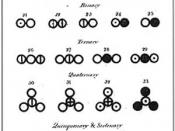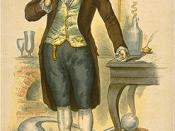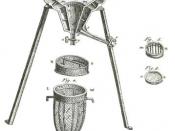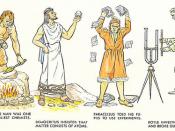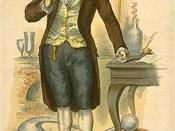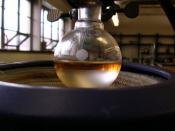The History and Progression of Chemistry
The birth of the modern atomic theory. In 1750, Rudjer Boscovich, a scientist born in what is now Croatia, suggested the theory that atoms were "uncuttable" might have been wrong. Boscovich thought that atoms contain smaller parts, which in turn contain still smaller parts, and so forth down to the fundamental building blocks of matter. He felt that these building blocks must be geometric points with no size at all. Today, most atomic physicists accept a modern form of this idea.
Antoine Lavoisier, a French chemist, revolutionized chemistry in the late 1700's. He repeated many of the experiments of earlier chemists but interpreted the results far differently. Lavoisier paid particular attention to the weight of the ingredients involved in chemical reactions and of the products that resulted. He found that the weight of the products of combustion equals that of the original ingredients.
His discovery became known as the law of the conservation of matter.
Lavoisier noted that the weight of the air in which combustion occurred decreases. He found that the weight loss results from the burning material combining with and removing a substance in the air. That substance was the same as dephlogisticated air, but Lavoisier renamed it oxygen.
Lavoisier and Pierre Simon Laplace, a French astronomer and mathematician, also carried out experiments demonstrating that respiration in animals is chemically similar to combustion. Their studies of the chemical processes of living organisms were among the first experiments in biochemistry. Lavoisier also helped work out the present-day system of chemical names. He published his ideas on combustion, respiration, and the naming of compounds in Elementary Treatise on Chemistry (1789), the first modern textbook of chemistry.
The development of the atomic theory advanced greatly when chemistry became an exact science during the late 1700's. Chemists discovered that they could combine elements to form compounds only in certain fixed proportions according to mass.
In 1803, a British chemist named John Dalton developed an atomic theory to explain this discovery. Dalton proposed that each element consists of a particular kind of atom and that the varying properties of the elements result from differences in their atoms. He believed that all the atoms of a particular element had the same mass and chemical properties. According to Dalton's theory, when atoms combine and form a particular compound, they always combine in a specific numerical ratio. As a result, the composition by mass of a particular compound is always the same. The theory could explain and predict the results of various experiments.
According to Dalton's theory, a fixed number of atoms of one substance always combined with a fixed number of atoms of another substance in forming a compound. Dalton realized that substances must combine in the same proportions by weight as the weight proportions of their atoms. Chemists had already observed that pure substances do combine in fixed proportions. They called that finding the law of definite proportions. Dalton's theory explained the law and was gradually accepted.
By 1814, Jons J. Berzelius, a Swedish chemist, had obtained accurate atomic weights for a number of elements. He also began the system of using letters of the alphabet as symbols for elements.
Formation of the periodic table
In 1869, a Russian chemist named Dmitri Mendeleev and a German chemist named Julius Lothar Meyer independently announced their discovery of the periodic law. The law is based on their observation that when elements are arranged in a table according to their atomic weights, elements with similar properties appear at regular intervals, or periods, in the table. The two chemists rearranged the table in columns so that elements with similar properties were grouped together. Such an arrangement became known as the periodic table. Both men left gaps in the table, and Mendeleev correctly predicted that elements with certain properties would be discovered to fill the gaps. The modern periodic table serves as a guide to the chemistry of all known elements.
